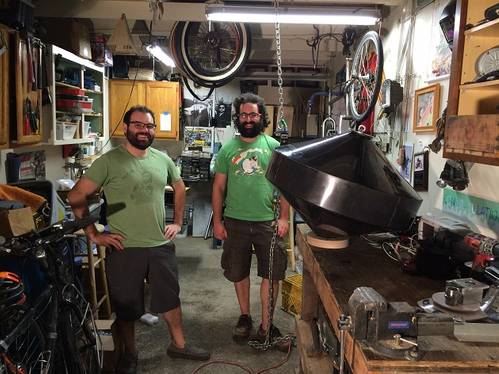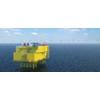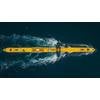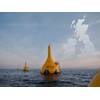Ninety-two teams competed in the U.S. Department of Energy’s (DOE) Wave Energy Prize, which began in April 2015 and seeks to spur the development of wave energy converters that will ultimately reduce the cost of wave energy in the U.S.
Now, following 18 months of designing, building and testing, a winner has emerged.
A duo from Portland, Ore., Alex Hagmuller and Max Ginsburg – together AquaHarmonics – were named the winners of the $1.5 million grand prize for their AquaHarmonicsWEC concept, a point absorber with latching/de-clutching control.
Though the contest officially kicked off in 2015, the team’s work together stretches about five years, when Hagmuller started to build small scale wave energy prototypes and enlisted Ginsburg, his friend from Oregon State University, to help design the electrical components and software. Together they built and tested several different wave energy prototypes, and the knowledge gained from each has led to many improvements and changes in the design.
“It’s been a project we’ve been working on since even before the Wave Energy Prize was announced,” Ginsburg said. “As we progressed towards the finals, it just got more and more exciting.”
Over the course of the competition, a panel of judges narrowed down the competition pool to nine finalists and two alternates, which were announced in March. These teams received up to $125,000 in seed funding to build scaled prototypes of their wave energy converter devices. With the support of the U.S. Navy, the finalist teams tested their prototype devices at the nation's most advanced wave-making facility, the Naval Surface Warfare Center's Maneuvering and Seakeeping Basin at Carderock, Md.
“This competition set a difficult threshold of doubling the energy captured from ocean waves, and four teams surpassed that goal,” said Lynn Orr, DOE’s Under Secretary for Science and Energy. “AquaHarmonics’ technology leap incentivized by the Energy Department demonstrates how rapid innovation can be achieved in a public prize challenge.”
Wave energy is produced by converting the energy from waves into electricity. This technology is expected to be a substantial resource in the delivery of renewable energy to the U.S. According to the DOE, hopes are that wave energy technology could one day provide clean, cost-competitive, reliable energy for homeowners, communities, businesses and government in geographically suited parts of the U.S.
The wave energy sector, however, is in its early stages of development, and the diversity of technologies makes it difficult to evaluate the most technically and economically viable solutions. The Wave Energy Prize Competition, which compared a wide range of device types and evaluated them against a threshold requirement for high energy capture, has already facilitated rapid technical innovation.
“The Wave Energy Prize marks a significant advance for marine energy,” Orr said.
In the next year, the Energy Department will publish data from all the finalist teams’ test results to further accelerate advancement of this sector.
CalWave Power Technologies and Waveswing America were awarded second and third place, respectively, with $500,000 and $250,000 in cash prizes.














 December 2025
December 2025



